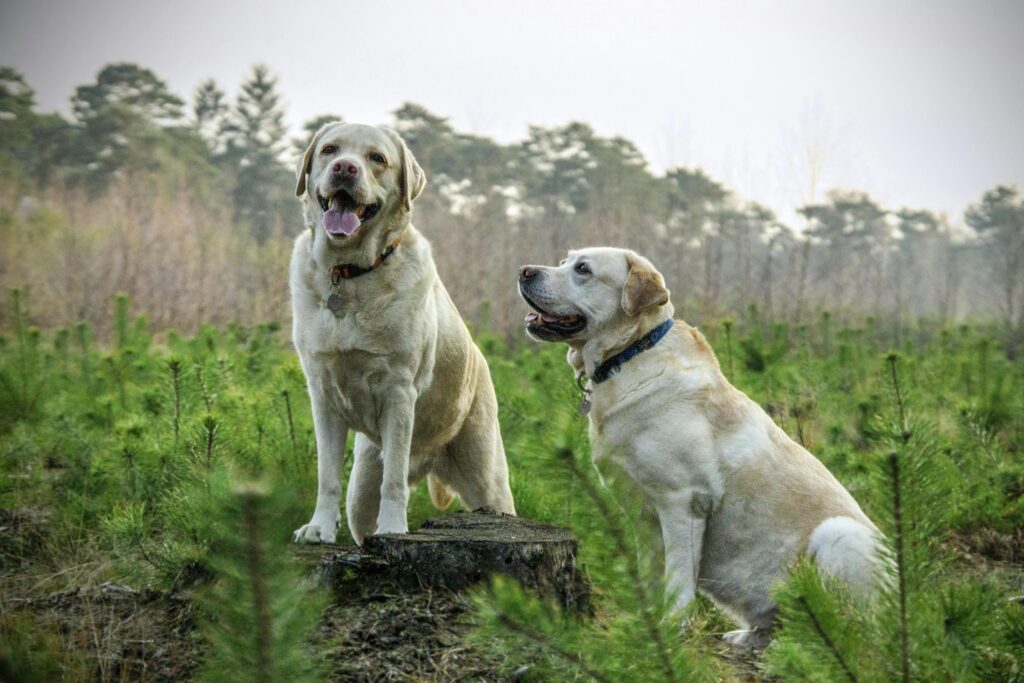Having more than one dog in your home can be incredibly rewarding. Dogs provide companionship to each other, play together, and bring even more joy to your family. But a multi-dog household also bring unique challenges, especially when it comes to training. Without structure, homes with more than one dog can experience competition, bad habits spreading from one dog to another, or even fights.
The good news is with the right training approach, you can create harmony and reinforce obedience in your multi-dog household.

Why Multi-Dog Homes Require Extra Structure
Dogs are social animals, but group dynamics can get complicated. Without leadership, dogs may compete for resources like food, toys, or attention. Training helps:
- Establish clear rules and boundaries for everyone
- Prevent jealousy and rivalry
- Ensure each dog listens to you, not just follows the other dog
- Build respect and structure in the pack
For example, if one dog pulls on leash, it is very likely the other will copy. Establishing leadership with both prevents one dog’s bad habits from influencing the other.
Train Dogs Individually First
Before expecting your dogs to work together, make sure each one has solid obedience skills on their own.
Focus areas for individual training:
- Reliable recall
- Basic obedience commands (sit, down, place, come)
- Leash manners
- Impulse control around food and toys
Once both dogs are individually reliable, you can begin group sessions. If either dog struggles with focus, start with our guide on training focus around distractions like kids, dogs, and BBQs.
Training Together: Step by Step
When you are ready to train both dogs together, follow a gradual process:
- Work in parallel: Walk them side by side with two handlers before combining leashes.
- Group sit and stay: Teach both dogs to hold position together. Reward calm behavior.
- Rotate commands: Give each dog a command individually to ensure they are listening to you, not just copying.
- Practice neutrality: Reward calmness when the other dog gets attention, preventing jealousy.
Consistency is key. Both dogs should understand that training is a shared experience, but listening to you remains the priority.
Managing Resources in Multi-Dog Homes
Resource guarding is one of the most common challenges in multi-dog households. Prevent issues before they begin:
- Feed dogs separately or with clear space between bowls
- Pick up toys when not supervised
- Give each dog their own bed or crate
- Supervise high-value items like bones
This structure helps prevent tension and ensures each dog feels secure.
Preventing Pack Mentality Problems
When dogs live together, they may form a “pack within the pack.” This can sometimes lead to them ignoring commands or teaming up against your leadership. To prevent this:
- Spend one-on-one time with each dog daily
- Reinforce obedience with both group and individual sessions
- Rotate which dog gets attention first to prevent favoritism
Our Basic & Advanced Obedience Program provides the tools to maintain structure in homes with multiple dogs, ensuring your leadership remains clear.
Troubleshooting Common Multi-Dog Issues
Problem: One dog copies the other’s bad habits
Solution: Correct the behavior in both dogs consistently. Train the correct response individually, then in group sessions.
Problem: Dogs fight over attention
Solution: Teach both to hold a “place” command. Reward calm waiting and alternate attention fairly.
Problem: One dog dominates training sessions
Solution: Give commands individually and reward separately. This prevents one dog from overshadowing the other.
Expert Guidance
The American Kennel Club provides tips on training in multi-dog households, emphasizing the importance of fairness, structure, and individual attention. Combining these strategies with professional obedience training makes life smoother in multi-dog homes.
Final Thoughts
Training in a multi-dog household requires patience, structure, and consistency. By starting with individual training, establishing clear rules, and working gradually toward group obedience, you can maintain harmony and avoid conflict.
Your dogs look to you as the leader. With clear guidance, they can learn to live together peacefully, respect boundaries, and thrive in a structured environment.
If you are ready to bring structure and harmony to your multi-dog home, our trainers are here to help. Get started today by reaching out through our contact page.

